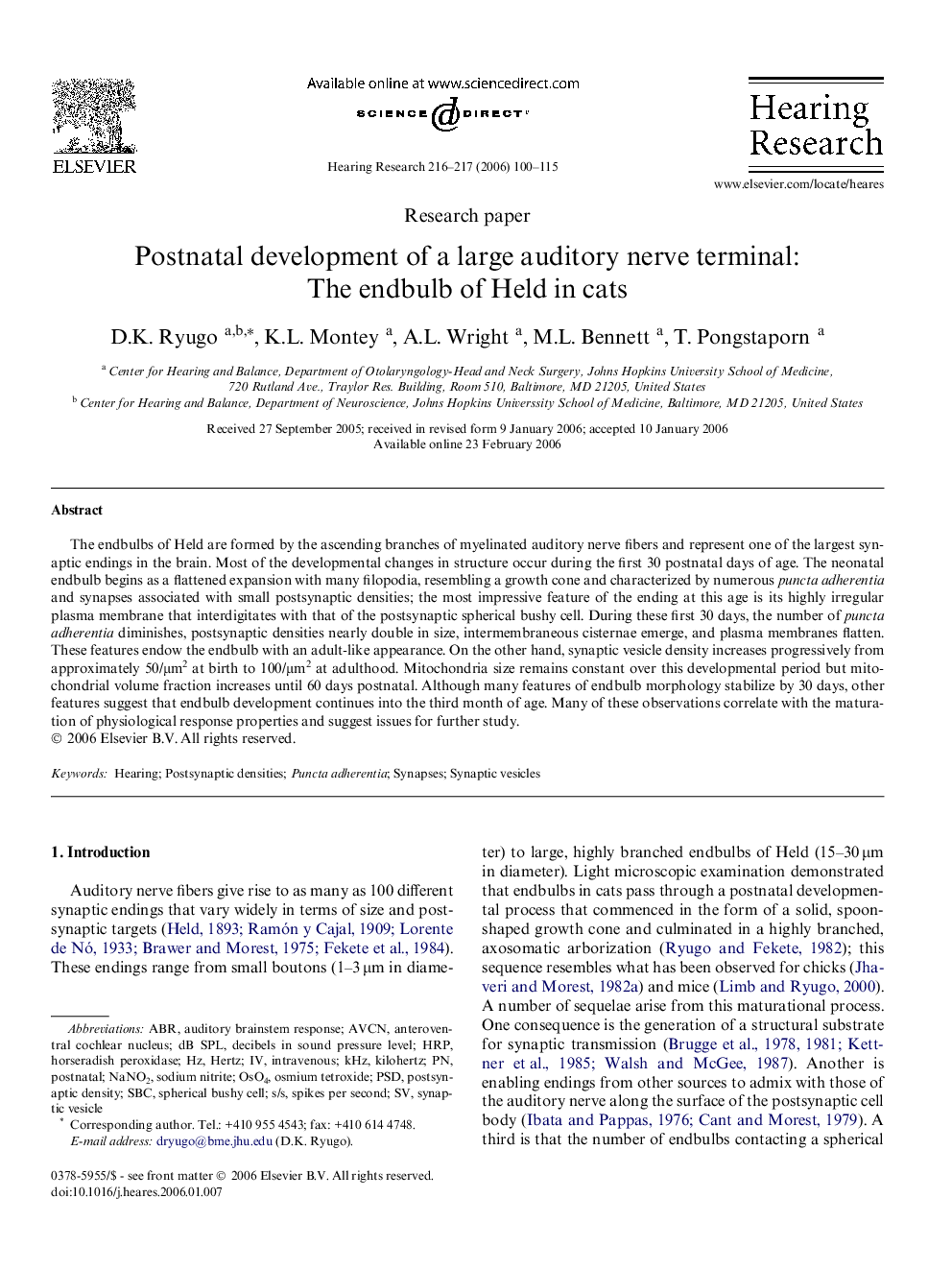| Article ID | Journal | Published Year | Pages | File Type |
|---|---|---|---|---|
| 4356434 | Hearing Research | 2006 | 16 Pages |
The endbulbs of Held are formed by the ascending branches of myelinated auditory nerve fibers and represent one of the largest synaptic endings in the brain. Most of the developmental changes in structure occur during the first 30 postnatal days of age. The neonatal endbulb begins as a flattened expansion with many filopodia, resembling a growth cone and characterized by numerous puncta adherentia and synapses associated with small postsynaptic densities; the most impressive feature of the ending at this age is its highly irregular plasma membrane that interdigitates with that of the postsynaptic spherical bushy cell. During these first 30 days, the number of puncta adherentia diminishes, postsynaptic densities nearly double in size, intermembraneous cisternae emerge, and plasma membranes flatten. These features endow the endbulb with an adult-like appearance. On the other hand, synaptic vesicle density increases progressively from approximately 50/μm2 at birth to 100/μm2 at adulthood. Mitochondria size remains constant over this developmental period but mitochondrial volume fraction increases until 60 days postnatal. Although many features of endbulb morphology stabilize by 30 days, other features suggest that endbulb development continues into the third month of age. Many of these observations correlate with the maturation of physiological response properties and suggest issues for further study.
